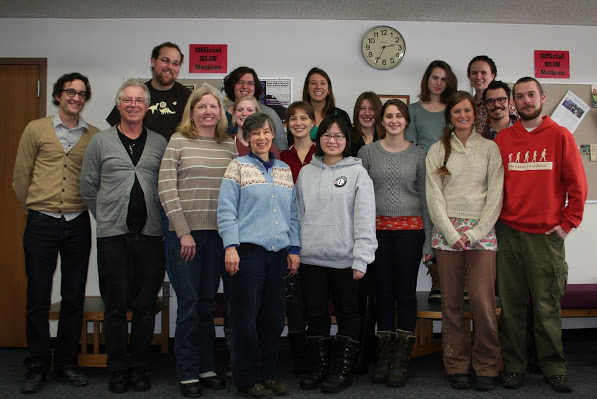This week in TLAM, we bought our good friend Rand Valentine back to present and to join our discussion about native languages, revitalization and education programs, and the oral storytelling tradition.
There’s a quip about language popularized by Max Weinreich: a language is just a dialect with an army and a navy behind it. That is to say, there really is no inherent difference between a dialect and a language, except a difference in social and political power associated with them. We more or less arbitrarily assign the terms ‘language’ or ‘dialect’ to communication systems based on politics, power, geography, and perceived worth rather than an actual linguistic difference. When we talk about indigenous languages, this little joke takes on serious overtones; the current endangered state of many native languages and dialects is just a symptom of the greater social and political disenfranchisement of native peoples.
We learned that at the time of European contact, about 500 native languages were spoken in North America. Today, the number is below 200. This loss of language is directly tied to government policies that attempted to integrate indigenous peoples into Western society. The boarding school experience, where generations of native youth were taken from their families, constituted an an assault on culture beginning by stripping children of their language. By removing their ability to communicate in their own language, children at boarding schools were unable to communicate shared ideas, values, and beliefs with each other, effectively isolating them unless they adopted western language, dress, and behavior.
Today, the boarding school era is over, but its ramifications are still felt across the country; people who have lost the ability to speak and understand their traditional languages have lost an important part of connecting to their community and their past. Language revitalization efforts are underway, but many lack sufficient materials or funding. Rand pointed out that even in communities with a healthy number of speakers, it is difficult to locate sufficient written native-language materials to provide opportunities to improve language skills, train teachers, or develop language immersion school curricula.
We talked about the headway that is being made. The hard work of dedicated individuals and groups has brought many of these languages back to life, making them living, breathing things once more. Immersion schools like Waadookodaading [http://www.waadookodaading.org/] serve as success stories, with stellar student performance on standardized English tests.
We also discussed our role as information professionals in this landscape. Information and culture agencies have a great opportunity to affect change and support speakers of indigenous languages that they serve. These institutions have a responsibility to make materials about or written in native languages as accessible as possible; with the availability of modern and historical written materials come possibilities for improved language revitalization programs that combine traditional oral modes with the western textual tradition.
Libraries, archives, and museums can and must move beyond the simple curatorship of native language materials, though. These agencies are in the unique position to use these materials to create relationships and foster understanding in their non-native patron base and to create a system of care and access that is respectful and sensitive to native ways of telling and knowing. Perhaps most importantly – and this is also perhaps the greatest challenge – libraries, archives, and museums, are in a position to present ways of knowing and telling very different than the textual, ‘objective,’ western norm and to challenge assumptions of what counts as a legitimate way to share and take in knowledge.
-Sarah McDole


